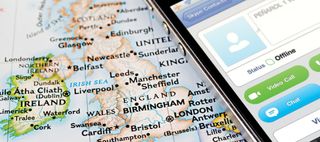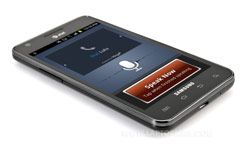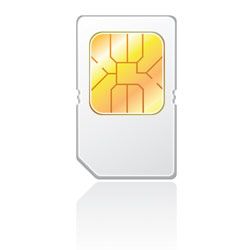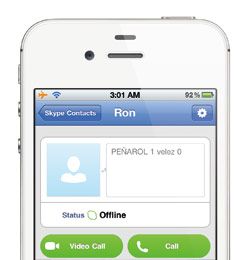How to Reduce or Avoid International Roaming Charges
International data roaming charges can cost more than your entire trip. Here are five tips for reducing roaming charges during your travels.

Between hotel costs, airfare, and dining out, overseas travel can get expensive quickly. But nothing can empty your wallet faster than calling home from halfway across the globe. It’s not uncommon for travelers to unknowingly rack up more than $1,000 in international roaming charges. Then there are the data costs; you could pay as much as $20,480 for one gigabyte of data.
Thankfully, there are several options to help keep your calling and surfing needs from draining your bank account. International calling plans—along with pre-paid and rental SIM cards—can save you money, but they require a compatible handset. Rental cell phones, mobile hotspots, and VoIP services will also save you some cash, but they have some drawbacks as well. Read on to find out which option is best for you.
1. Carrier Options
Most carriers offer reduced rates for calling abroad through special international calling plans. But before you sign up, you’ll have to make sure your phone will work where you’re traveling. There are two types of cell phone systems in wide use: CDMA and GSM. In the U.S., Sprint and Verizon Wireless use CDMA, and it’s also used in South America and most Asian countries. GSM, on the other hand, is used by AT&T and T-Mobile in the U.S., as well as in most of Africa, Europe, and the Middle East.

If your phone uses an antenna that’s compatible with your international destination, you’ll still have to make sure that it works on the radio bands used in the area. Certain GSM phones known as world phones can support up to four radio bands, meaning they accept signals from the two GSM signals used in the U.S. as well as the two used in Europe.
Although signing up for an international calling plan with your carrier is cheaper than paying international roaming rates, it will still cost you a pretty penny. “Because of international tariffs, or whatever arrangements U.S. carriers have, it’s almost always less expensive to buy a prepaid phone in Europe to call the U.S.,” explained Consumer Reports’ Michael Gikas.
Calling the U.S. from Germany on your AT&T phone without an international plan will cost you $1.39 per minute, while data will cost $19.97 per MB of data. Under AT&T’s World Traveler plan, however, you’ll pay a $5.99 monthly fee and still pay as much as $0.99 a minute to call Germany. And with AT&T’s DataConnect Pass, you can get 50MB of data for $24.99. That’s better than the carrier’s pay-per-use costs, but still much more expensive than what you’ll pay in the U.S.: $25 for 2GB.
Verizon Wireless customers with GSM-capable phones can also take advantage of their carrier’s international plan. Standard calling rates to Italy cost $1.29 per minute. Under the company’s Global Traveler plan, you can expect to pay $0.99 per minute. Data gets the same treatment as well. Standard data rates can cost you $20.48 per MB of data. With a monthly global plan, though, you can expect to pay $30 for 50MB of data. Go over that and you’ll pay an additional $5.12 per MB. Yikes.
2. SIM Cards
Renting a SIM card is a viable option that can save you more money than roaming fees and most international calling plans. Sprint and Verizon offer only a small selection of SIM-enabled phones that can be used overseas, but all of AT&T and T-Mobile’s handsets use SIM cards.
To install a rental card, you’ll first have to call your carrier and request a SIM unlock code. If you’ve had your phone for more than 90 days and your account is in good standing, your carrier should provide you with the code. Don’t meet those requirements, and you won’t get it.

Both prepaid and pay-as-you-go SIM cards let you make voice calls and provide access to data from your own phone without having to pay onerous long distance fees. Companies such as Telestial, Truphone, and XCom Global let you purchase or rent international SIM cards for as low as $5 a card. Beyond that, you’ll pay the companies’ price-per-minute charges.
Telestial, for instance, charges $5 for its Passport Lite Travel SIM card with $5 of calling credit. Calling the U.S. from the U.K. will run you $0.99 per minute, but received calls in France, Italy, and the U.K are free. Sending a text will cost you a bit more: $0.79. Data runs $0.79 per MB.
Truphone’s cards will cost $29.99 with a $15 starter credit, and the company charges users $0.10 a minute for calls from the U.K. to landlines and cell phones in the U.S. You’ll pay more for incoming calls: $0.17 per minute. Texts will cost you $0.08 to send, but receiving them is free. Data costs $0.15 per MB.
You can also rent local SIM cards from the country you’ll be visiting, explains Ken Grunski, president of global retail sales at Telestial. And while he admits that getting a SIM card in the U.K. may be easier and cheaper than Telestial’s service, Grunski says that picking up a card in most other countries will be more expensive.
The downside to getting a rental SIM card, Gikas says, is that you’ll have to provide the SIM’s number to anyone you expect to be in contact with, since it will differ from your phone’s normal number. You can also expect many of your phone’s features, including e-mail access, to be disabled when the rental card is installed. Most phones’ clocks will also stop working properly when a rental SIM is installed, although resetting them manually will fix that.
3. VoIP
Voice over Internet Protocol services such as Skype and Vonage can also provide travelers with a cheap and easy way to get in touch with their relatives back home. “Our general advice is that services such as Skype are definitely less expensive… for making international calls anyway you look at it,” Gikas said.

With Skype, calls to landlines or cell phones in the U.S. cost 2.3 cents per minute on a pay-as-you-go plan or $2.99 per month. Text messaging costs 11.2 cents per text. Skype’s Unlimited World plan lets you call North America, as well as four other countries around the world, for $13.99, and calling another Skype user is free no matter where you are.
Vonage offers similar services through its Vonage World Plan. For $25.99 a month, you can add a mobile extension to your Vonage home number that can then be used to make free calls from anywhere to all U.S. land and mobile lines. Vonage-to-Vonage calls are free.
The problem is that VoIP services require a data connection. And finding free Wi-Fi access while abroad can be tough. That’s why it pays to rent a mobile hotspot that you can pair with your existing smartphone.
Sign up to get the BEST of Tom’s Guide direct to your inbox.
Upgrade your life with a daily dose of the biggest tech news, lifestyle hacks and our curated analysis. Be the first to know about cutting-edge gadgets and the hottest deals.
4. Rental Phones
If your phone doesn’t accept SIM cards or use the same radio bands as the country you’re visiting, you may want to look into renting an international phone. Companies such as Telestial and Tep Wireless rent out smartphones for a predetermined amount of time and charge you significantly reduced calling rates.

With Tep Wireless, you can rent a phone for five days at a rate of $45 and pay as low as $0.04 per minute for calls to the U.S. Tep can also set you up with an unlimited data connection for $41.30 for five days. That’s a pretty good deal. Telestial’s services will cost you $19 for a basic phone with calls to U.S. landlines and cell phones costing $0.99 per minute. All received calls are free. You won’t get data or Bluetooth with this phone, though the company does offer other handsets that include both.
5. Mobile Hotspots
If you’re traveling for business and want data access on your laptop and/or smartphone, a mobile hotspot is the way to go. Both Tep Wireless and XCom Global rent mobile hotspots and charge based on the MB you use. A standard hotspot rental through Tep Wireless for a trip to France, for example, will cost you $56.33 for the unit and five days worth of data at 150MB a day. You can also add 100MB of data and enable Skype calling for an additional $5.95 a day. If you’d like, Tep can send your hotspot to any destination in Europe for $14.95.

With XCom Global, you can rent a hotspot with unlimited data access for up to five devices at a rate of $14.95 per day. USB modems are also available. If you order within 10 days or less of your trip, you’ll have to cough up an additional $29.99 for shipping. Order before that and shipping is free. If you plan on traveling across Europe, the company can also provide you with a European SIM for the hotspot.
Choose Your Connection
No matter how you decide to connect, expect to pay more for data and voice than you would in the U.S. But if you do your homework, you can save big. Connecting with your carrier’s international plan lets you use your phone, but is costly unless you sign up for a international plan. Rental SIMs are less expensive but force you to use a different number. VoIP is a great solution but will require a data connection. Overall, mobile hotspots are probably your best bet, because they’ll supply data to your laptop and smartphone and let you make VoIP calls from your handset with a single device.
Dan Howley is a writer and editor whose work has appeared on Tom's Guide, Laptop Mag, CNN business, MSN, AOL, and more, covering smartphones, laptops, and wearables. He now works full time at Yahoo Finance, where he writes articles covering the tech and gaming industries. He lives in New York.
